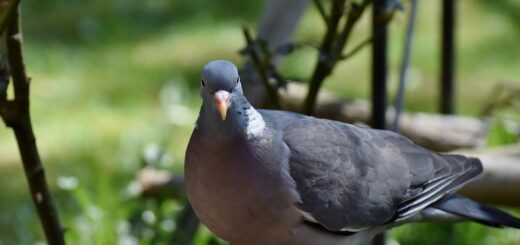Blackbird
Exploring the Fascinating World of Blackbirds
Blackbirds are a fascinating and diverse group of birds that belong to the family Icteridae. With their striking black plumage and melodious songs, they have captured the imagination of bird enthusiasts and researchers alike. In this article, we will delve into the world of blackbirds, exploring their behavior, habitat, and significance in various cultures.
The Diversity of Blackbirds
When we think of blackbirds, the image of the common blackbird (Turdus merula) often comes to mind. However, the term blackbird actually encompasses a wide range of species, each with its own unique characteristics. From the Red-winged Blackbird (Agelaius phoeniceus) of North America to the Eurasian Blackbird (Turdus merula) of Europe, these birds are found in various regions across the globe.
One of the most striking features of blackbirds is their plumage, which is predominantly black or dark in color. However, many species also exhibit vibrant flashes of color, such as the bright red epaulets of the Red-winged Blackbird or the iridescent sheen of the Brewer’s Blackbird (Euphagus cyanocephalus).
Another aspect of their diversity is their behavior and habitat preferences. While some blackbirds are known for their affinity for wetlands and marshes, others are found in open grasslands or urban areas. This adaptability has allowed blackbirds to thrive in diverse environments and make their mark on the avian world.
The Role of Blackbirds in Ecosystems
Blackbirds play a crucial role in their respective ecosystems, contributing to various ecological processes. As omnivorous birds, they have a diverse diet that includes insects, seeds, fruits, and even small vertebrates. This feeding behavior allows them to act as both predators and seed dispersers, influencing the population dynamics of other species and contributing to the dispersal of plant species.
Furthermore, blackbirds are known for their vocalizations, which play a significant role in communication and mate attraction. The intricate songs of male blackbirds serve as a means of defending territory and attracting potential mates, contributing to the reproductive success of the species.
Additionally, blackbirds are often involved in complex interactions with other bird species, such as brood parasitism by the Brown-headed Cowbird (Molothrus ater). These interactions have ecological implications and shed light on the interconnectedness of different avian species within an ecosystem.
The Cultural Significance of Blackbirds
Throughout history, blackbirds have held a special place in the folklore, mythology, and symbolism of various cultures around the world. In many societies, these birds are associated with mystery, magic, and the afterlife, adding a layer of mystique to their already enigmatic presence.
One of the most famous references to blackbirds is found in the nursery rhyme Sing a Song of Sixpence, where four and twenty blackbirds are baked in a pie. This whimsical imagery has endured through the ages, becoming a part of popular culture and children’s literature.
Moreover, blackbirds have been depicted in art, literature, and music, serving as symbols of sorrow, wisdom, and transformation. The haunting call of the Common Blackbird has inspired poets and composers, evoking a sense of melancholy and introspection.
Conservation Challenges and Efforts
Despite their adaptability, many blackbird species face threats to their survival, including habitat loss, pollution, and climate change. Wetland-dwelling species are particularly vulnerable to degradation of their habitats, while urbanization poses challenges for those that have adapted to human-altered landscapes.
Conservation efforts aimed at protecting blackbird populations have focused on habitat restoration, research on migration patterns, and public awareness campaigns. By understanding the ecological needs of blackbirds and the challenges they face, conservationists are working to ensure the long-term viability of these captivating birds.
In conclusion, blackbirds are an integral part of the avian tapestry, with their diverse species, ecological roles, and cultural significance adding depth and richness to the natural world. By studying and appreciating these birds, we gain a deeper understanding of the interconnectedness of life on Earth and the importance of preserving biodiversity for future generations.

